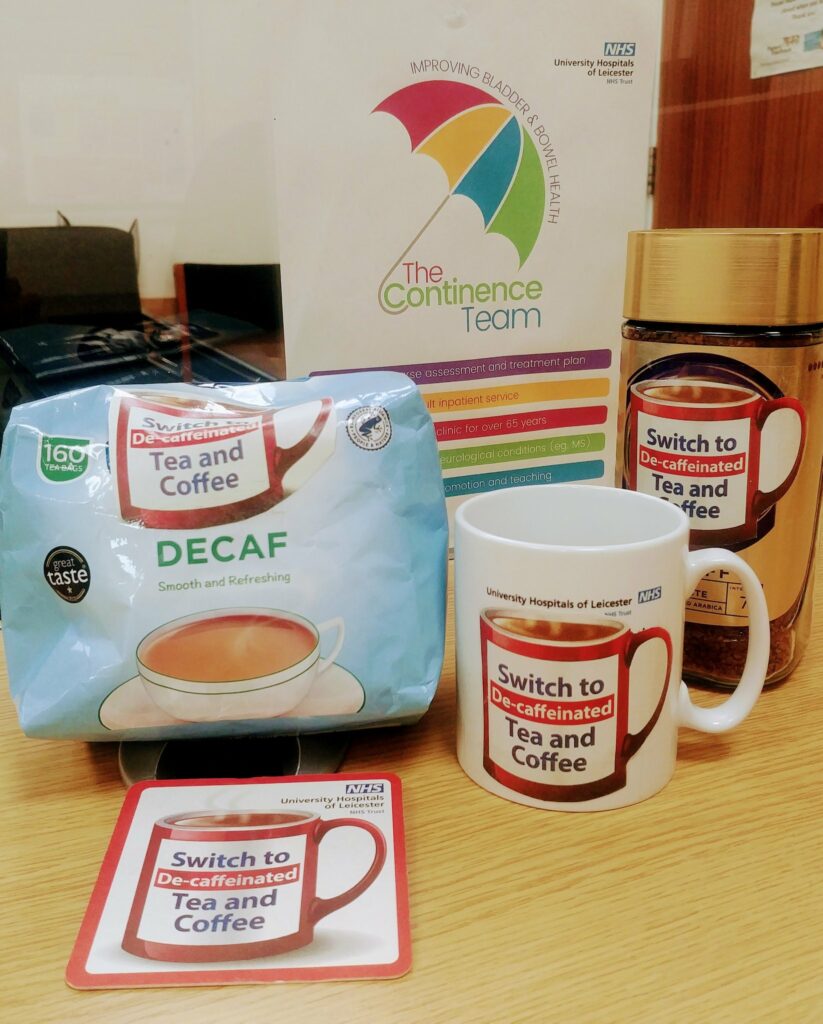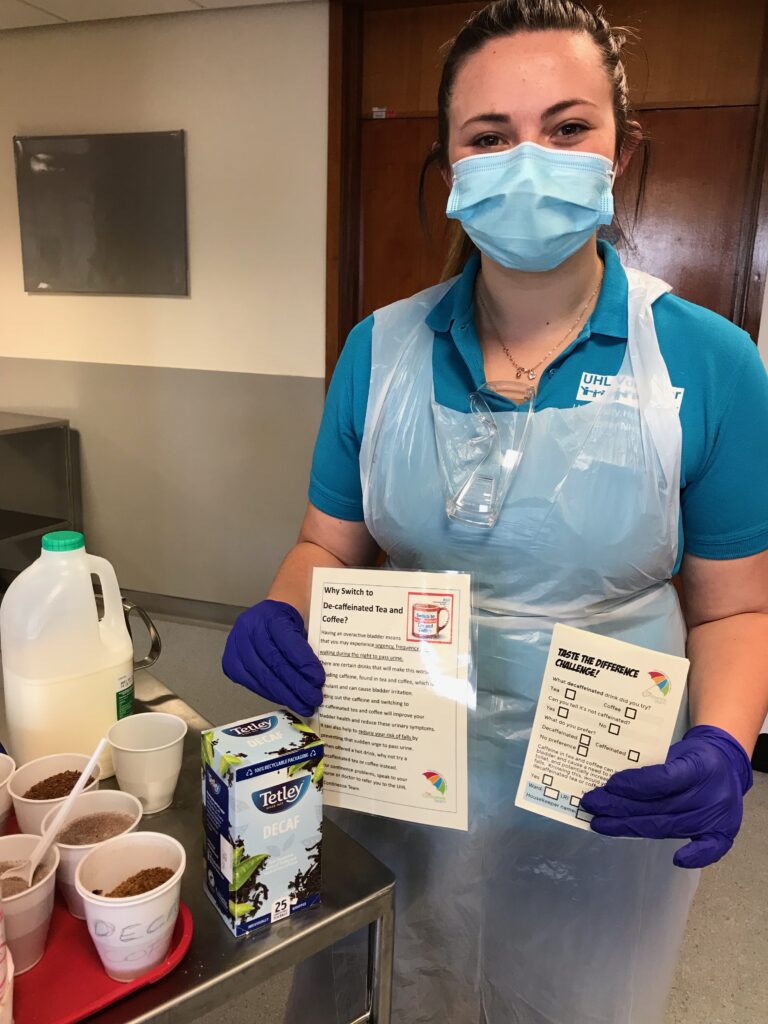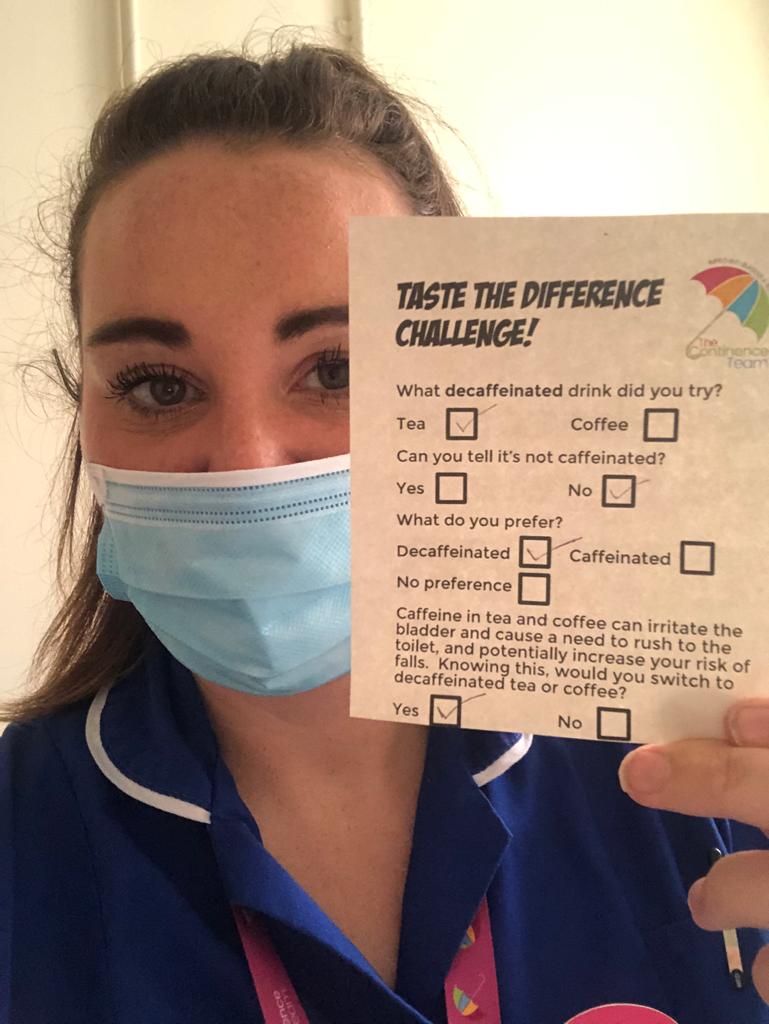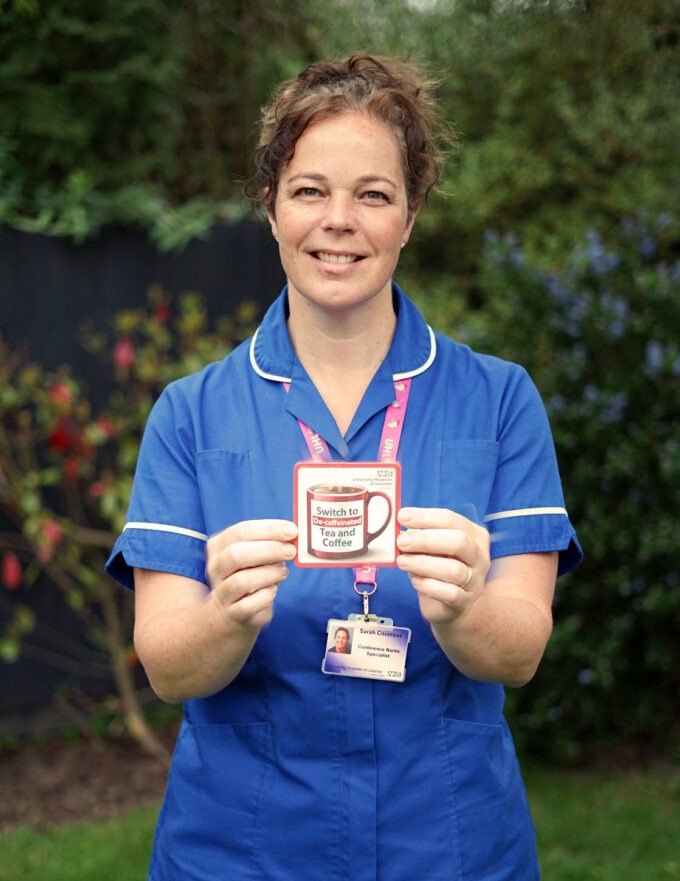This guest blog, written by Sarah Coombes, Continence Nurse Specialist for the University of Leicester talks about an innovative approach to improving bladder health by promoting decaffeinated drinks.
Last year as part of Continence Awareness Week, University Hospitals of Leicester NHS Trust’s (UHL) Adult Continence Team launched their ‘Taste the Difference Challenge’. The team worked collaboratively with ward staff and housekeepers in Leicester’s Hospitals, to promote and offer decaffeinated tea and coffee to inpatients across the Trust. Educating staff and patients about the benefits of switching to decaffeinated tea and coffee for a healthy bladder was one of the campaign’s aims, and gathering patient feedback such as could patients taste the ‘decaf difference’ and whether they would make the switch to decaf once they knew the health benefits.
Why is switching to decaffeinated tea and coffee a good idea?

Apart from reducing overactive bladder symptoms such as urinary urgency, there are other health benefits including reduction in sleep disturbance and insomnia, reduction in tachycardia and palpitations and helping to prevent dehydration and headaches as well as reducing indigestion and lowering risk of osteoporosis as caffeine prevents absorption of calcium (NHS, 2021).
The UHL Continence Team launched the ‘Taste the Difference Challenge’ following a pilot project on an acute hospital ward, which was experiencing inpatient falls related to toileting. In UHL, falls associated with toileting equate to 1:4 (between 2020-2021) and research suggests a high correlation between falls and lower urinary tract symptoms in hospital (Roggeman et al. 2020).
What did the project involve?
The pilot considered thinking holistically about falls related to toileting and continence. After observations of care and talking to staff, it was identified that decaffeinated drinks were not routinely offered during ‘drinks rounds’. Staff did not know the benefits of switching to decaffeinated tea and coffee, such as reducing urinary urgency and could potentially reduce a person’s risk of falls.

We asked housekeepers to proactively offer patients decaffeinated tea and coffee, and patient feedback indicated that most patients could not taste the difference. A resource pack was also developed for the ward which included coasters, posters and patient information leaflet to explain the benefits and promote decaffeinated tea and coffee.
What was found during the challenge?
During the challenge, the team collated nearly 700 pieces of patient feedback which included over 50% of patients saying they could not ‘taste the difference’ and over 76% patients reporting they would switch to decaffeinated once they knew the health benefits. A recommendation was made to the Trust’s Chief Nurse and Executive Board to consider making decaffeinated tea/coffee served as default with caffeinated tea and coffee remaining as an alternative option for patients. The Trust’s leadership team made a decision to support this initiative and we are in the process of rolling it out across our hospitals. Importantly, this means whilst we are promoting the health benefits of decaffeinated hot drinks as standard, the choice for our patients to choose caffeinated drinks will still be there.
The impact of the ‘Taste the Difference Challenge’, and roll-out of decaffeinated tea and coffee across the three hospitals will be measured through further patient feedback, and analysis of falls Datix incident reports, as to whether inpatient falls have reduced associated with toileting.
What’s next for the challenge?

The ‘Taste the Difference Challenge’ has since been trialled in another community hospital trust, and following their own ‘Taste the Difference Challenge’ in Memory Cafés for people living with Dementia, Age UK in Leicestershire now serve decaffeinated tea and coffee in their Memory Cafés.
The ‘Taste the Difference Challenge’ is a really simple, and fun way to promote decaffeinated tea and coffee, and can be transferred to any hospital, community group or residential care home setting. The potential benefits of switching to decaffeinated products in any environment could be significant and include improving a person’s health and potentially reducing falls, as well as improving patient dignity through lower continence pad usage. As part of the UHL Continence Team, I hope to share these benefits with other organisations or groups who might be interested and want to trial their own ‘challenge’ too.
If you are interested in delivering your own ‘Taste the Difference Challenge’, then Sarah Coombes, Continence Nurse Specialist at UHL, would love to hear from you. Email: sarah.j.coombes@uhl-tr.nhs.uk, for further information and a resource pack to get you started.
For more information and resources for professionals working with bladder and bowel issues, visit our professionals’ section here.



Comments are closed